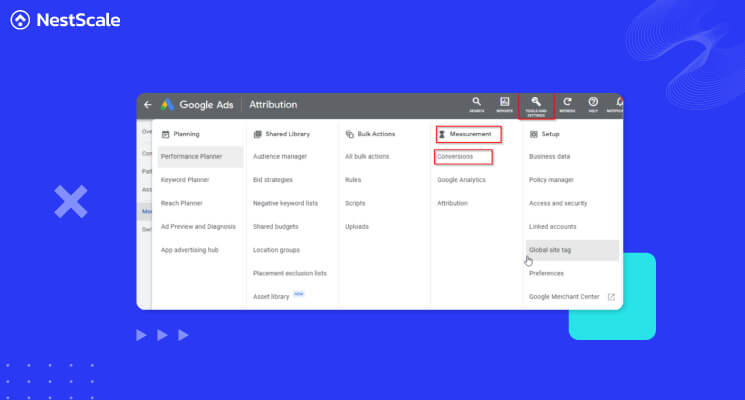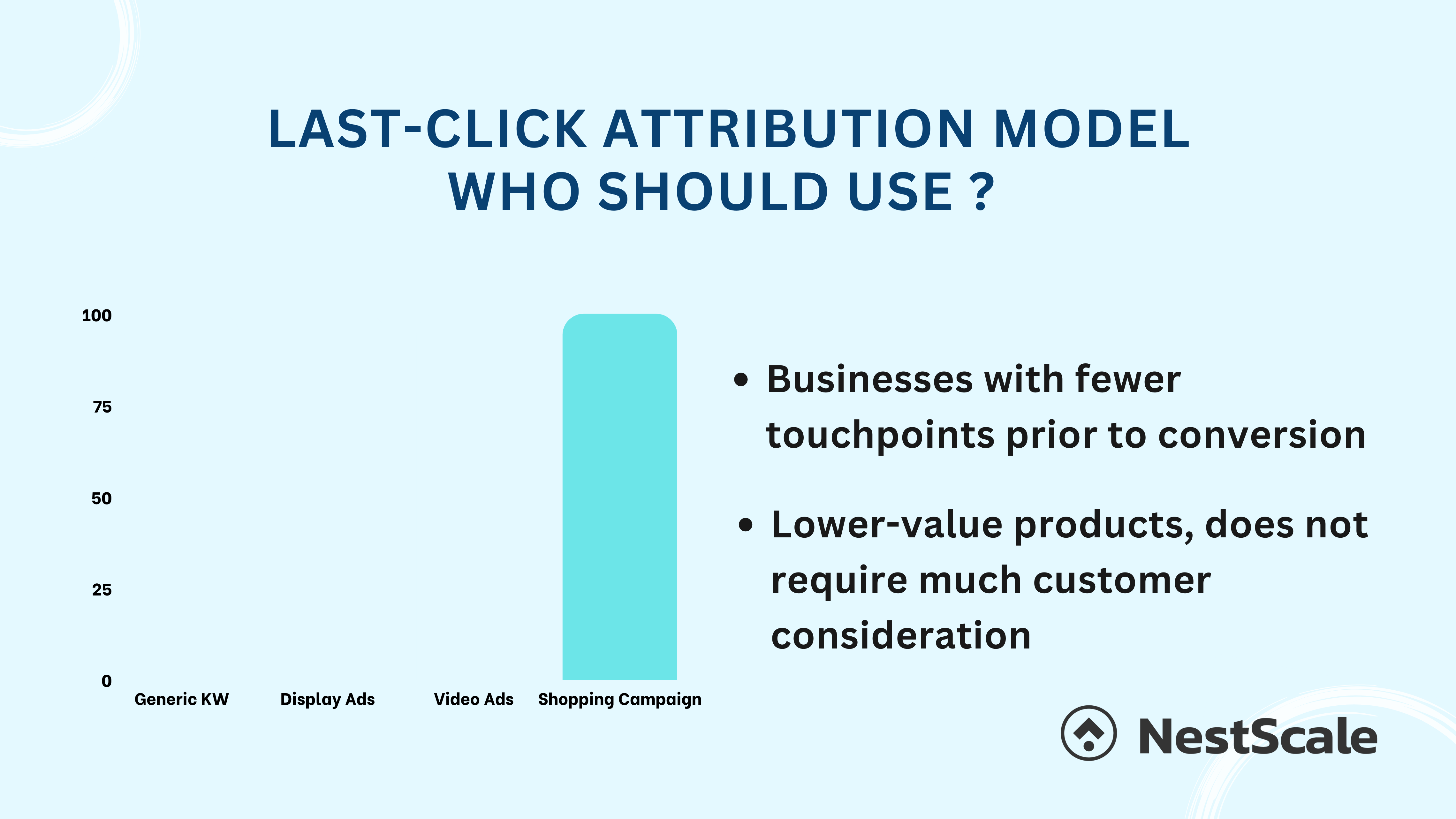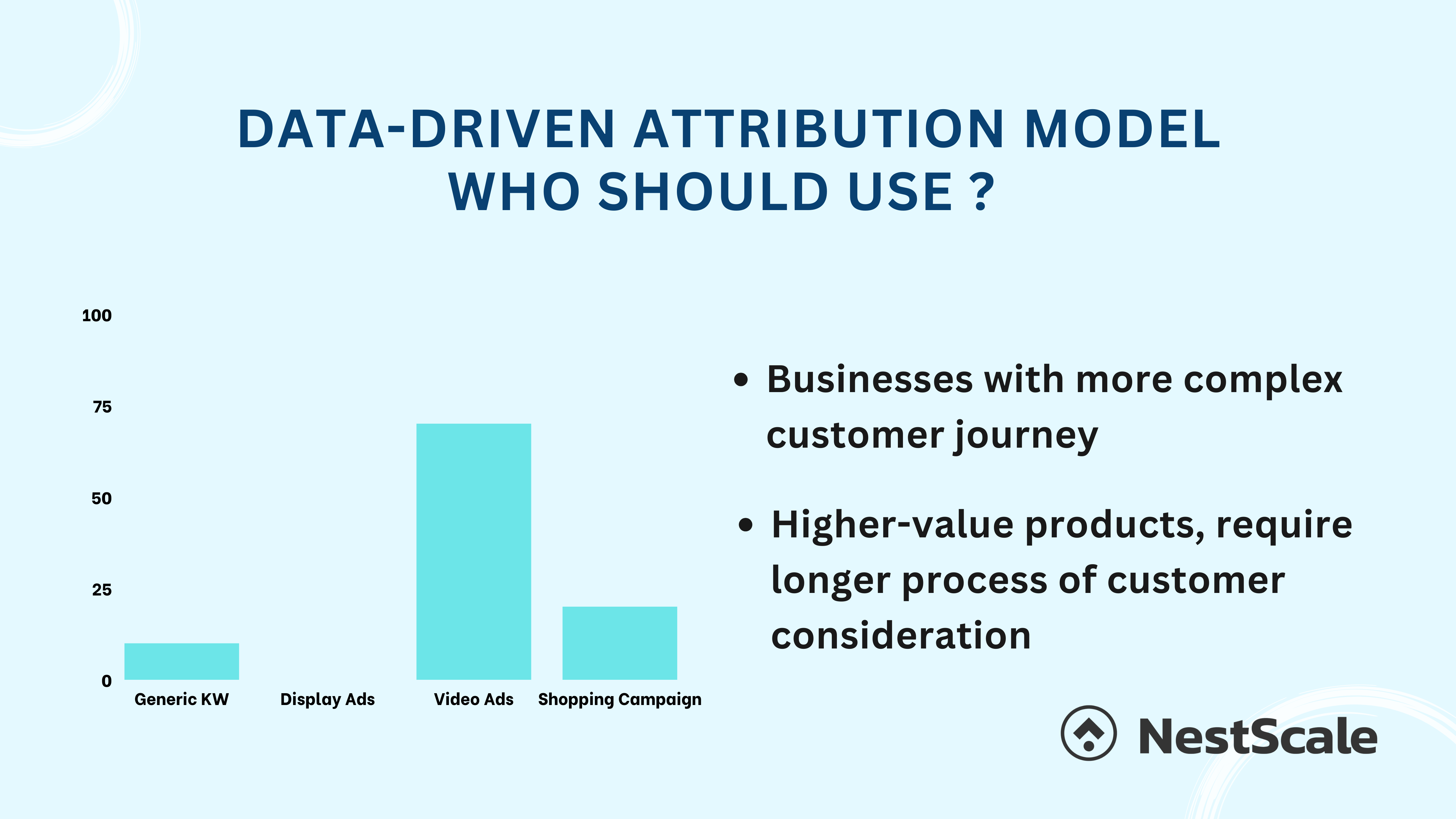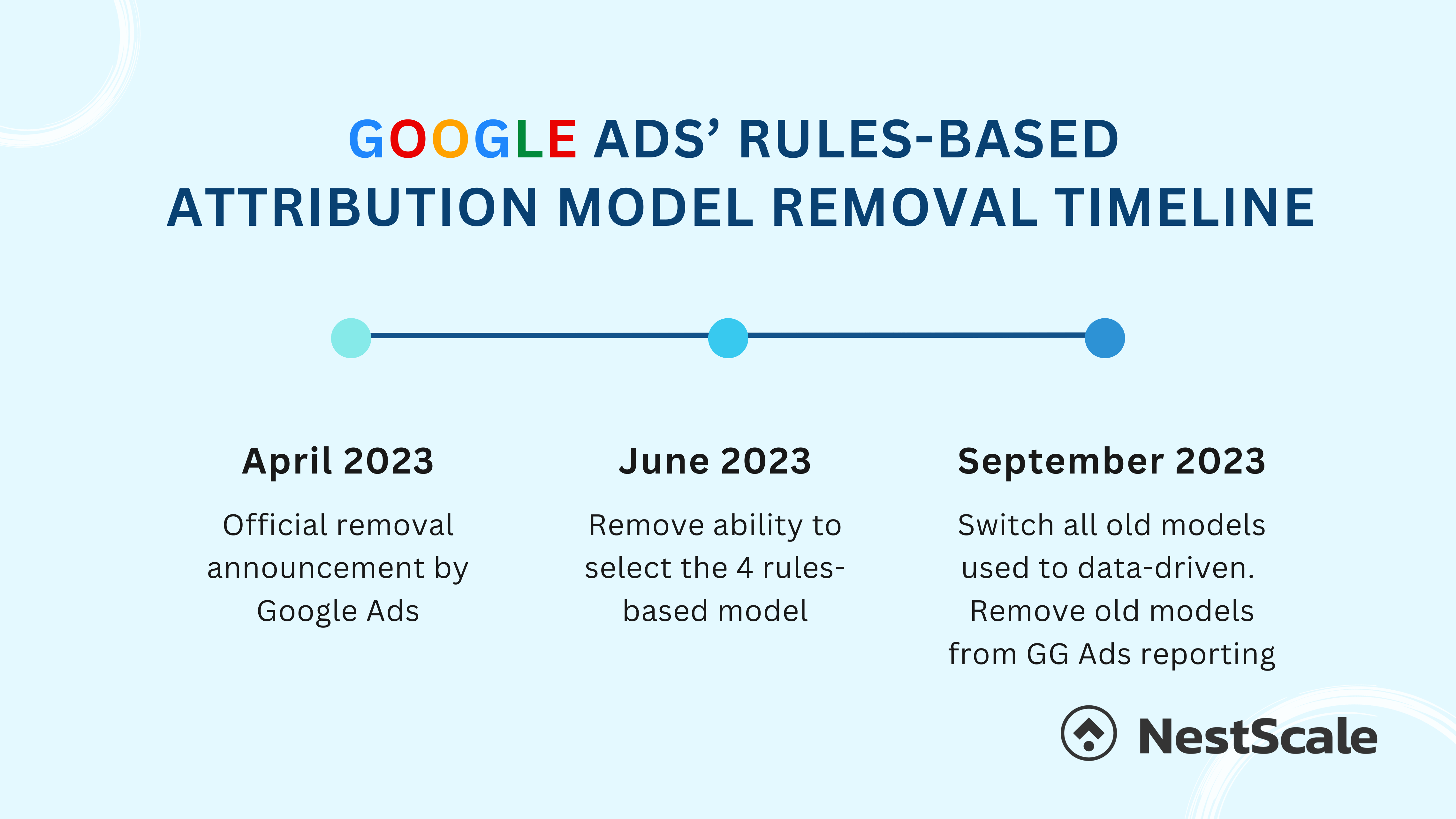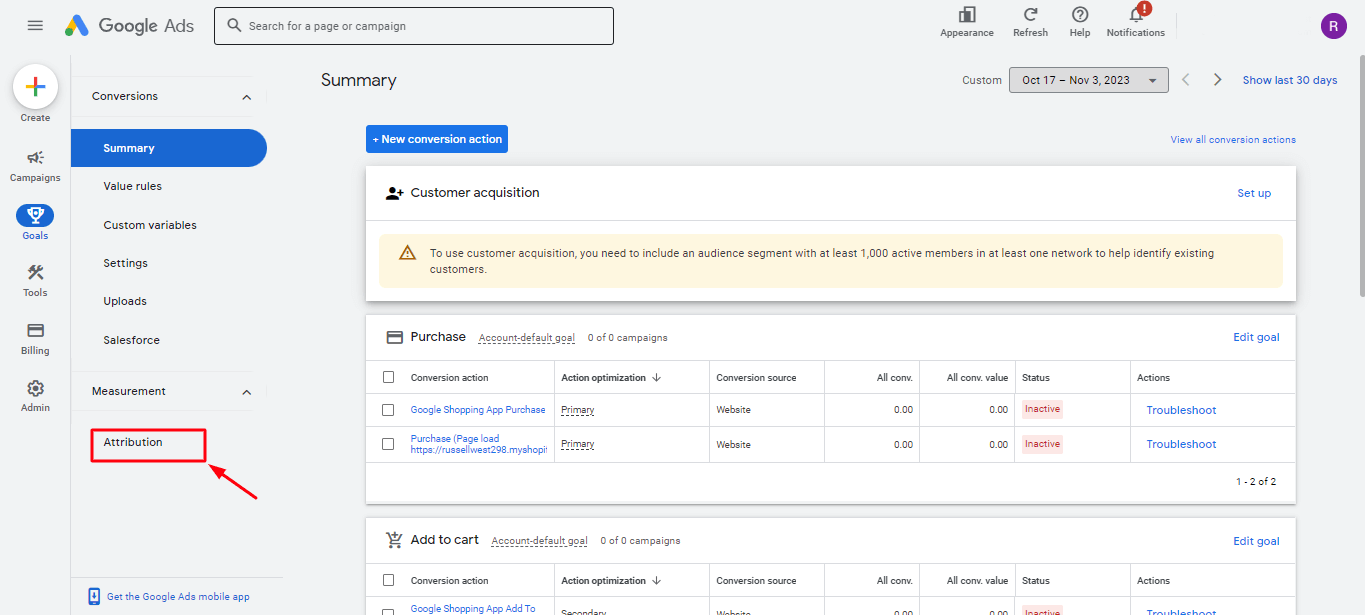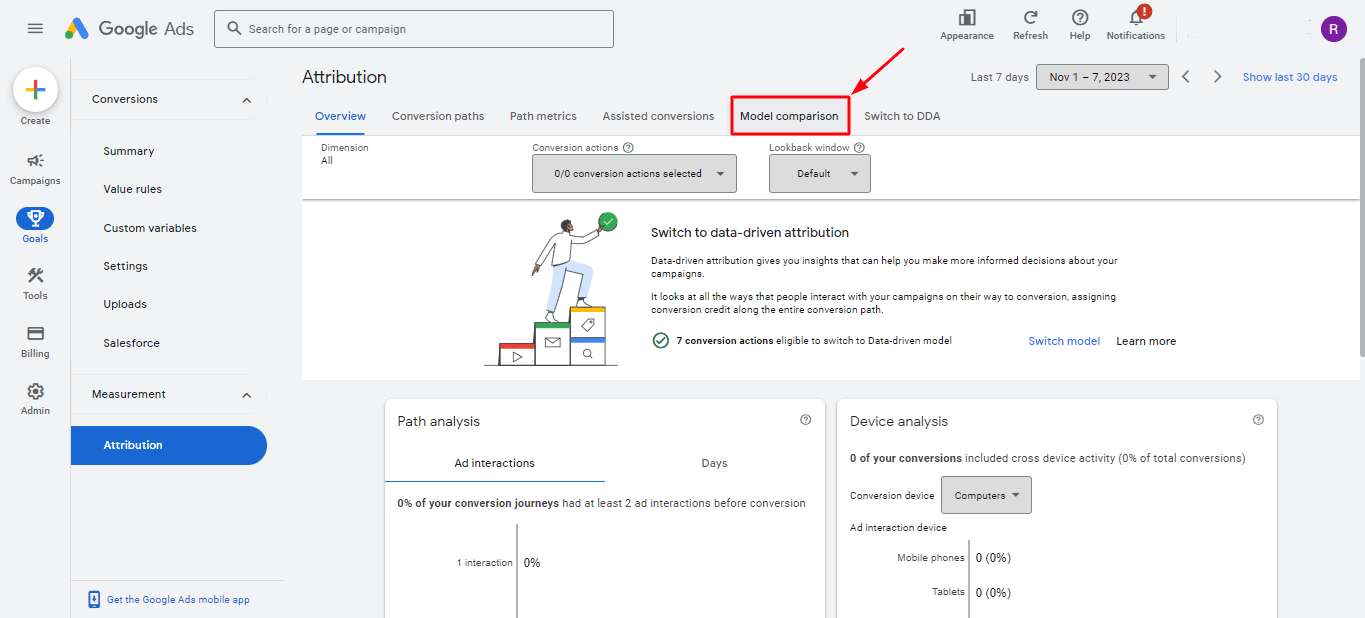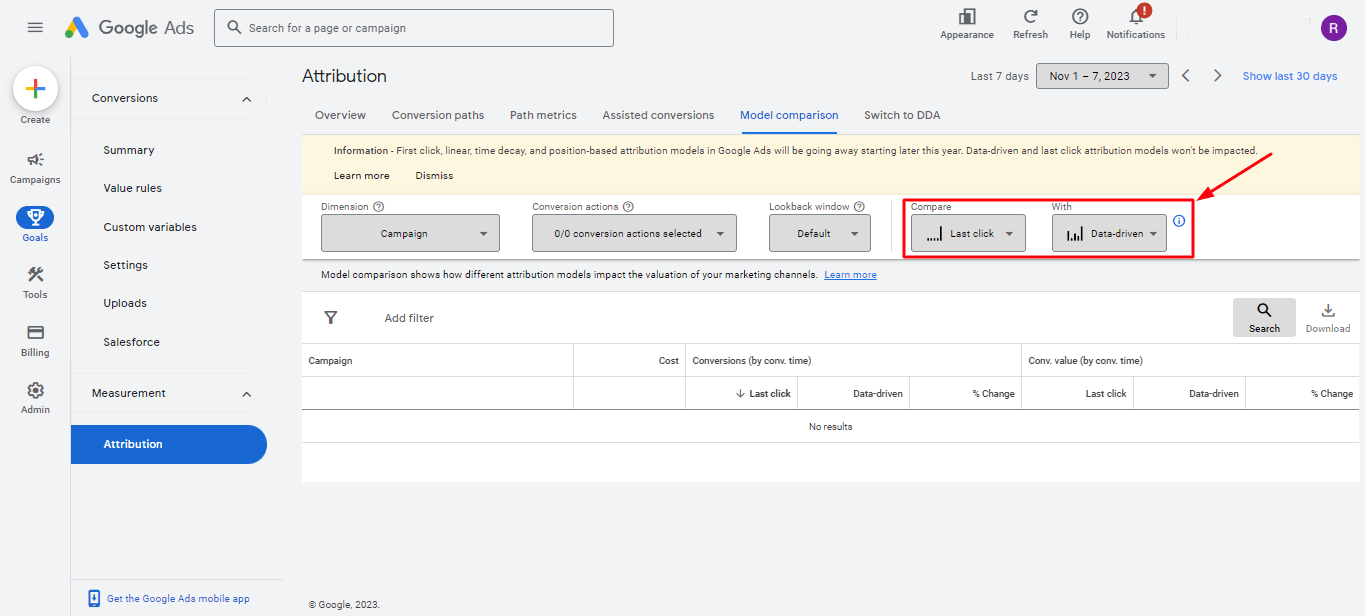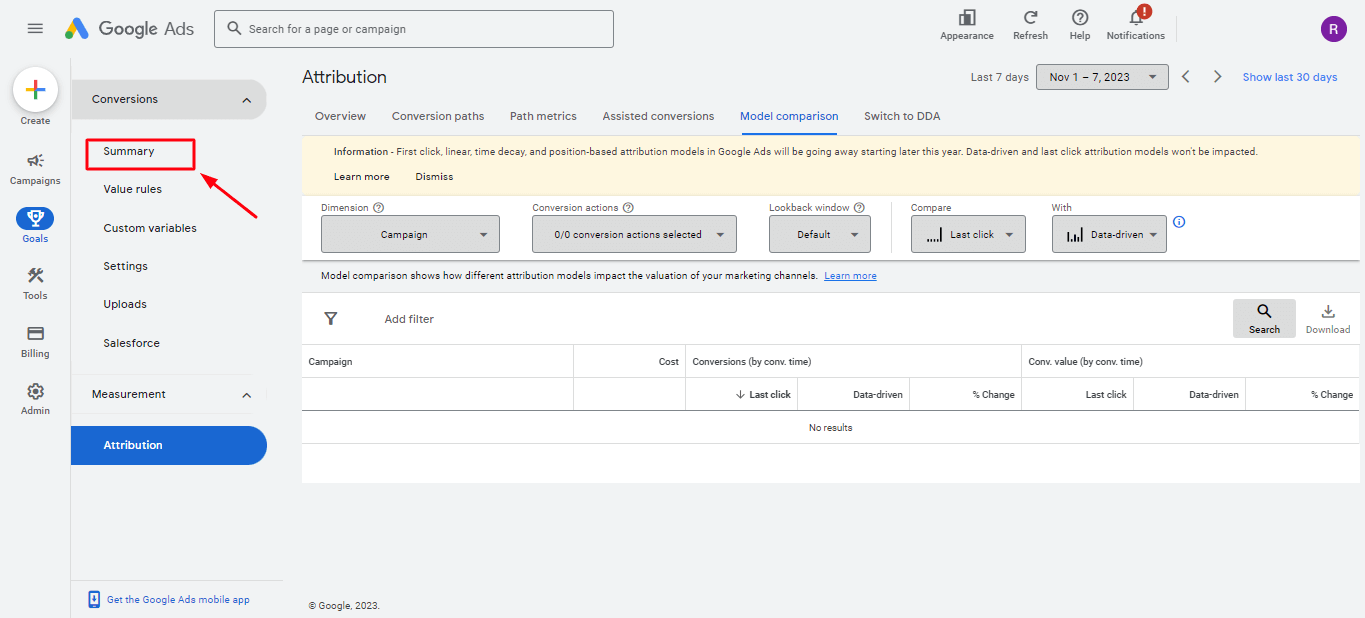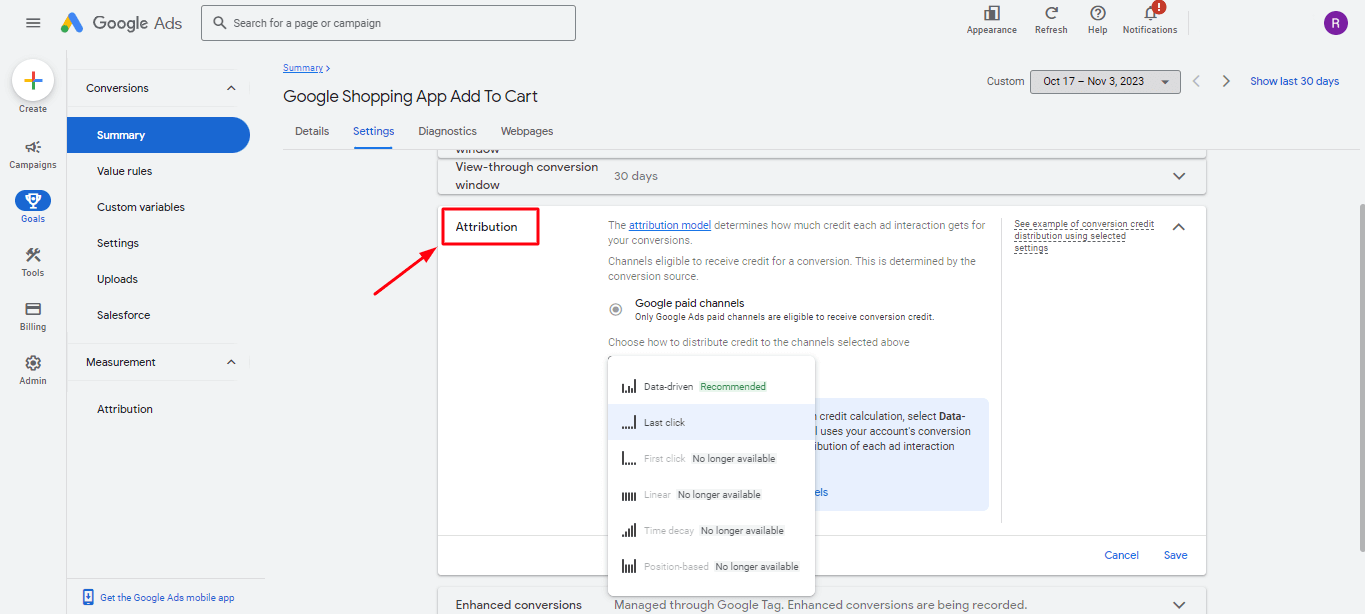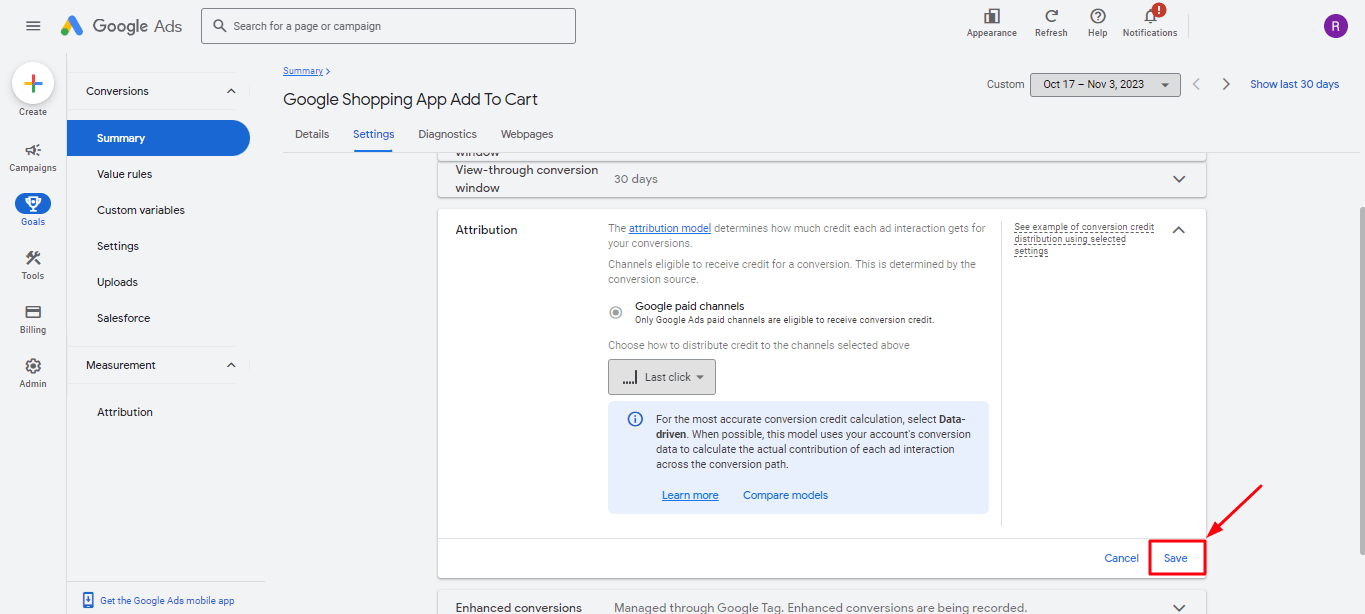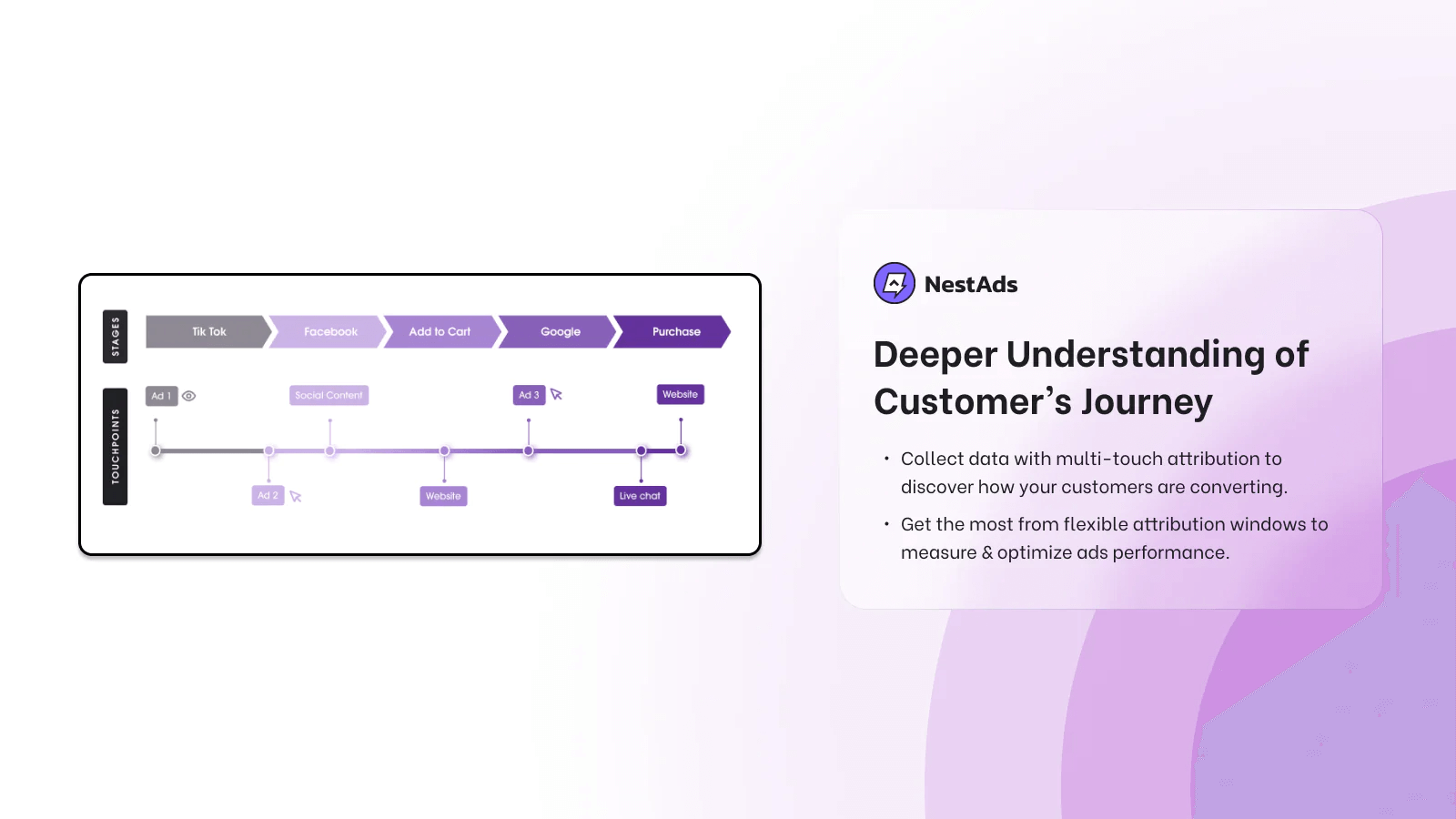Google Ads is undoubtedly one of the most popular advertising platforms up to date. So, it’s crucial to understand how it works and the changes that occur within the system to make the most out of this giant platform. Earlier this year, Google announced certain changes that will be made to the Google Ads attribution model settings.
Amidst all this news, businesses might be confused as to what to do and how to adapt to the sudden updates. So in this blog post, we’ll explore what attribution models are, why they are important, the different types available, and provide a real-world example. We’ll also discuss the latest Google Ads updates, and ultimately help you determine the best attribution model for your Google Ads campaigns.
What is attribution model in Google Ads?
Throughout the customer journey in Google, a customer typically encounters various touchpoints with businesses before converting. So, the question is, which of these interactions should receive credit for the sale?
This is where attribution models in Google Ads come in, as they provide the rules for distributing this credit among the various touchpoints. These Google Ads attribution models enable businesses to not only understand the interactions a user has with their ads and website before completing a desired action but also pinpoint which campaigns are influencing customers’ behaviors.
With this thorough understanding, marketers will be empowered to make more informed decisions and further optimize their online advertising campaigns. There are currently 2 main categories of attribution models – Single-touch and Multi-touch attribution. Depending on each situation will we choose the appropriate models.
Why are Google Ads attribution models important?
Attribution models indeed play a pivotal role in the world of digital advertising, and more specifically on advertising platforms like Google Ads. Let’s take a look at an example first to get why it is so important for any online advertising strategies.
Let’s say a customer plans on buying a new laptop. He searches on Google for “best laptops for students” and clicks on brand A’s ad for their new laptop model Y. There, he continues to browse the website and signs up to receive brand A’s newsletter. 2 days later, he receives an email with a limited 20% discount code for the laptop model Y. Intrigued, he visits brand A’s website directly and starts looking around. After some consideration, he finally purchased the laptop model Y.
This conversion path has various touchpoints, but not all of them carry the same weight in the result due to assessment factors like product types, customer buying cycles, business goals, and campaign goals. To handle this, you might want to allocate credit differently and assess how your channels perform in reaching customers. Google Ads can assist with this by offering user-friendly models that give you a fresh view of your customer conversion path. Ultimately, this will help you:
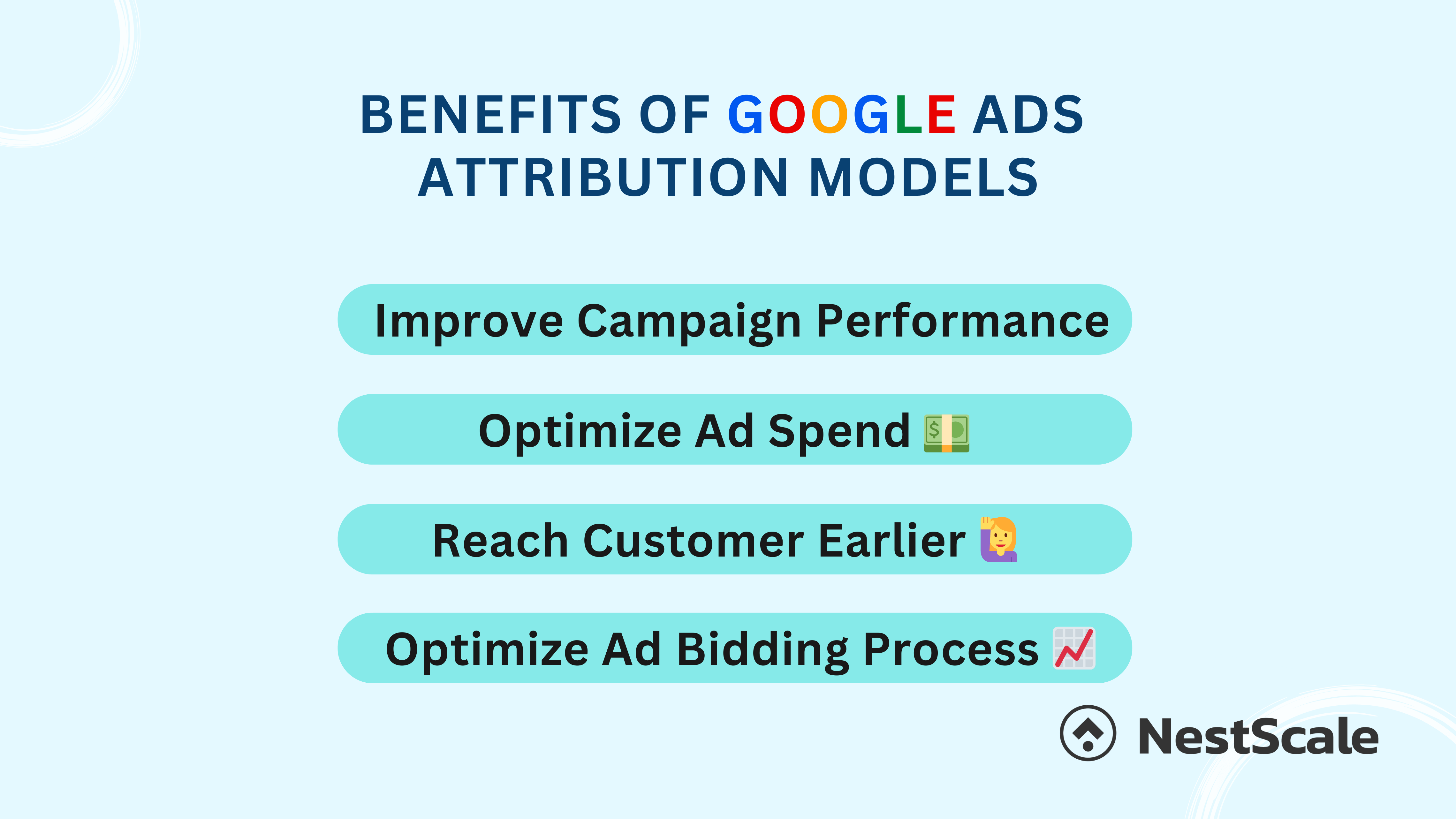
Improve campaign performance
Attribution models help you identify underperforming marketing channels or touchpoints. If you discover that certain channels or ads consistently receive little to no credit for conversions, you can take steps to improve them or reallocate your resources to more productive areas. This continuous improvement cycle can lead to better overall campaign performance.
Optimize ad spend
Attribution models help you allocate your marketing budget more efficiently. Instead of blindly investing in various advertising channels without a clear understanding of their impact, attribution models shed light on which channels and touchpoints are driving conversions. This knowledge enables you to allocate more resources to the most effective channels, maximizing your advertising ROI.
Reach customers earlier
With certain Google Ads attribution models, we can easily discover if earlier touchpoints are drawing in customers. This will allow businesses to attract and influence customers early on in their journey, which will in turn lead to conversion faster.
Optimize the ad bidding process
Once you understand how your ads perform, and which campaigns are driving the most sales, you’ll have an easier time deciding the bid amount for your ads. Low-performing ads might receive a lower bid, while more resources should be allocated toward high-performing ones. This will not only cut down on wasted ad spend but also be a huge time saver, especially when you have multiple campaigns running at a time.
Types of Google Ads attribution models (2025 latest updates)
In Google Ads, you’ve got a bunch of attribution models to make sense of the customer journey and figure out how credit is dished out to various touchpoints. Each model’s got its own way of doing things. Originally, Google Ads had six different models to choose from. However, some changes went down, which we’ll dive into in the next part of the blog. As of now, there are only two attribution models available in Google Ads.
So, let’s dive into these two available attribution models in Google Ads:
Last-click attribution model
The last-click attribution model in Google Ads assigns all the credit for a conversion to the last interaction and corresponding keyword that the user had with your ads before completing the desired action. However, it can be limited because it doesn’t consider the entire customer journey.
Example
A brand’s customer journey on Google Ads might include all the following interactions consecutively: Generic keywords – Display ads – Video ads – Shopping campaigns. Applying the last-click attribution model, all credit will go to the final shopping campaign, regardless of the influence earlier interactions had on the customer’s behaviors.
Who should use it?
This attribution model is perfect for businesses with fewer touchpoints before conversion or low-value products that do not require a high level of customer consideration.
Pros and cons of the last-click attribution model
| Pros | Cons |
| Straight-forward, easy to implement | Might give an inaccurate representation of touchpoints’ influence |
Data-driven attribution model
The data-driven attribution model, unlike others, does not have a fixed credit attributing formula. Instead, Google Ads will use your own account’s historical data to determine the attribution weights for each interaction. This unique feature will provide a more accurate reflection of how different touchpoints contribute to conversions. The data-driven model is also the new default model for all attribution events in Google Ads.
Example
Here, we are going to look at the same example above. However, there is one added hint. Ads metrics from the keyword, display, video, and shipping are analyzed. Applying the data-driven attribution model, the algorithm notices a pattern that oftentimes leads to conversion. 60% of customers who engage with the video campaign end up purchasing. In this case, a majority of the conversion credit will go to the video campaign.
Who should use it?
This model is probably most suitable for businesses with a more complex customer journey or offers higher-value products that require a longer process of customer consideration.
Pros and cons of the data-driven attribution model
| Pros | Cons |
| Provides a more accurate representation of the customer journey | Requires a large amount of data to set up, Difficult to implement |
Is Google removing 4 attribution models for advertisers?
Last year in April 2023, Google Ads announced that they would remove the 4 attribution models – first-click, linear, time decay, and position-based. Here’s the overall timeline for this major removal:
- April 2023: Official announcement by Google Ads regarding the removal of 4 attribution models.
- June 2023: Remove the ability to select first click, linear, time decay, and position-based attribution models for new conversion actions in Google Ads.
- September 2023: Switch any old conversion actions that still use the removed models to data-driven attribution. Users will be able to choose between the data-driven or last-click model for the conversion event. The 4 rules-based models will also be removed from Google Ads reporting.
As of now, Google Ads default attribution model is the data-driven model. However, users can still have the option to choose between the data-driven or last-click model for their conversion events. The main reason behind this major change is the significant drop in rules-based attribution model usage after the data-driven attribution model was introduced 3 years ago. As of early 2023, less than 3% of Google Ads web conversions were recorded using rules-based attribution models.
In fact, data-driven attribution has risen to become the most popular attribution model for automated bidding in Google Ads. This is also a great opportunity for Google Ads to simplify the measurement process for businesses.
How to compare and change your attribution model in Google Ads?
Amidst all this change, users must figure out the quickest way to change their attribution model to better fit their business strategies and goals. Here’s a detailed guide on how to locate and change your attribution model in Google Ads.
How to compare your attribution model setting in Google Ads
Step 1: Go to your Google Ads account. Locate the navigation bar on the left-hand side, then click on the Goals icon. Under the Measurements drop-down, choose Attribution.
Step 2: Select Model comparison in the Attribution’s menu
Step 3: You can pick the option you want to compare from the Dimension drop-down menu. Next, in the Compare and With drop-down menus, select the attribution models you’d like to view and compare.
You can use this feature to see how different attribution models will allocate conversion credit to ads, and what important metrics (such as conversions and cost/conv would look like). You could also edit other attributes like the Lookback window to see what your desired results would look like.
How to change your attribution model in Google Ads
Once you’ve gotten all the data you need, it’s time to change the attribution model.
Step 1: In your navigation bar, click on Conversions drop-down. Then, choose Settings.
Step 2: Select the campaign you want to edit, and then click on the Edit settings option in the bottom right corner.
Step 3: In the Setting page, click on Attribution tab. You should then see a drop-down option for the attribution model. Pick an option from the drop-down. You can only choose either Data-driven or Last-click, as the other options are no longer available.
Step 4: Lastly, remember to hit Save to save your changes.
How to choose the best attribution model for Google Ads
Selecting the best attribution model for your Google Ads campaigns is a crucial decision that can significantly impact your advertising strategy and budget allocation. The choice of attribution model depends on a variety of criteria, including your business goals, your products/ services, and your customer behaviors. Here are some factors to consider when determining the best attribution model for your Google Ads campaigns:
The customer journey
Before choosing an attribution model, it’s essential to clearly understand how your customers typically interact with your brand before making a conversion. Do they go through a lengthy research process? Or do they make quick decisions after one or two interactions? Understanding this journey will help you align your attribution model with reality.
Your key touchpoints
Identify the touchpoints that are most influential in driving conversions for your business. These could be the first interaction for building awareness, the last interaction for closing the sale, or specific interactions in between. The best attribution model should give appropriate credit to these key touchpoints.
Your industry and product type
The type of industry you’re in and the nature of your products or services can influence the choice of attribution model. For example, e-commerce businesses might benefit from a model that emphasizes the last interaction, such as last-click. Meanwhile, businesses with long sales cycles or high-value products may find data-driven attribution more suitable.
Budget and resources
Your budget and available resources are also 2 important criteria to keep in mind when considering which attribution model you should opt for. Generally, data-driven attribution models will be more expensive and require more data to implement. So if your budget is limited, last-click might be a more reasonable option.
Experiment first
It’s often a good practice to experiment with different attribution models to gain a more comprehensive understanding of how each impacts your campaigns. Many advertisers use a combination of models or periodically switch between models to gather insights from various perspectives.
Ultimately, there isn’t a one-size-fits-all answer for the best attribution model in Google Ads. The best model for your campaigns depends on your specific circumstances and goals. Regularly reviewing and adjusting your attribution model based on changing customer behavior and campaign performance is a key part of optimizing your advertising strategy in Google Ads.
Some limitations of Google ads attribution models
Google has indeed been making enormous efforts to improve its attribution models system. However, it’s safe to say that they are not yet perfect, and there still exist certain limitations of both available Google Ads attribution models.
On the one hand, the last-click attribution model is indeed straightforward and easy to implement. On the other hand, it might give an inaccurate representation of the touchpoints’ influence as it places heavy significance on the final interactions right before conversion. In terms of the data-driven attribution model, its biggest drawback is that it is quite difficult to implement. A large enough amount of data if they want to set up this model. This might pose a huge entry barrier for businesses, especially for small and medium ones.
| Limitations of last-click attribution | Limitations of data-driven attribution |
| Inaccurate representation of touchpoints’ influence | – Difficult to implement – Require a large amount of data to set |
Make the most of your Google Ads campaign with NestAds
As we can see, attribution models in Google Ads are essential tools for measuring the success of your advertising efforts. They offer valuable insights that can help you optimize your marketing strategy. Each attribution model will have its own set of advantages and drawbacks, and it’s our job to continue experimenting to find the most suitable option for our businesses.
If you haven’t found the right attribution model for your needs in Google Ads yet, don’t worry. There are still plenty of other options for your business. For instance, NestAds offers a unique model that gives 100% conversion credit to the last ad click for each channel. This means it considers the earlier touchpoints in the customer journey as well. By doing this, you can overcome the limitations of traditional attribution models, simplify your analytics, and make more informed decisions.
Elevate your online marketing strategy with NestAds today, and set yourself on the path to success!




































